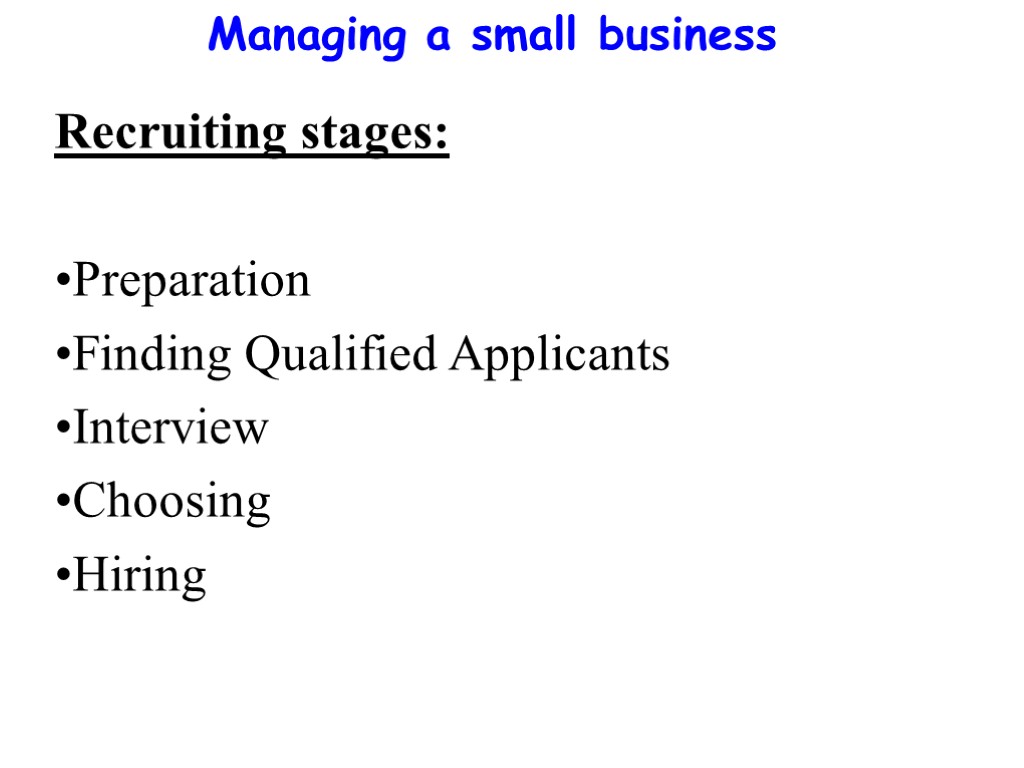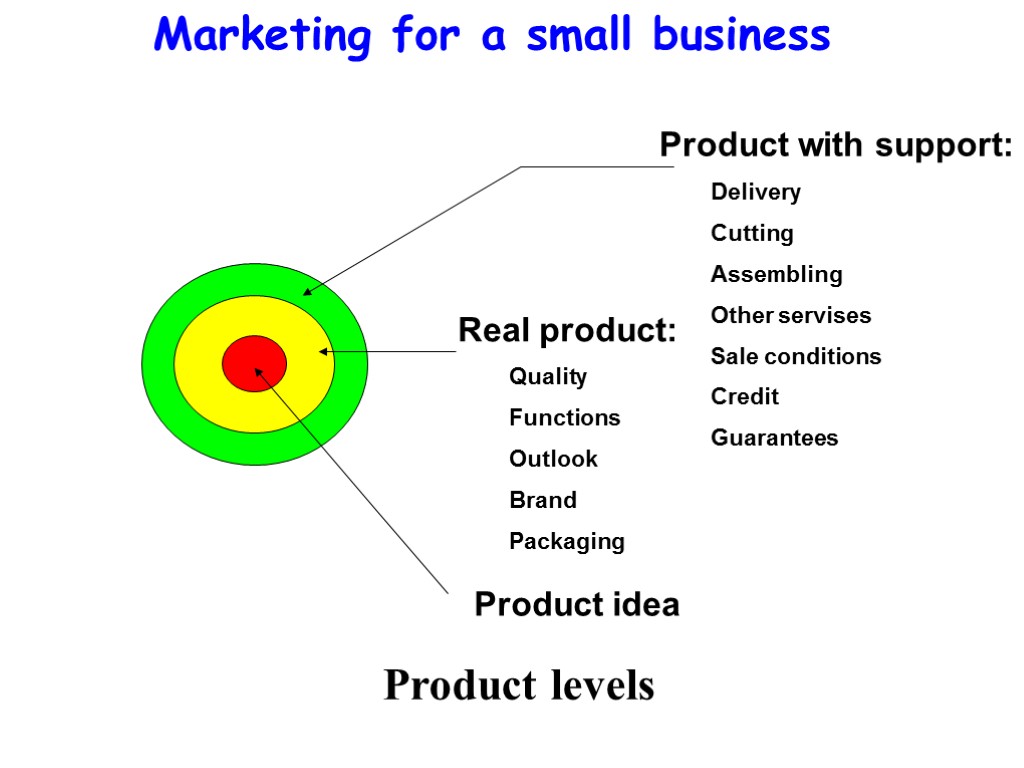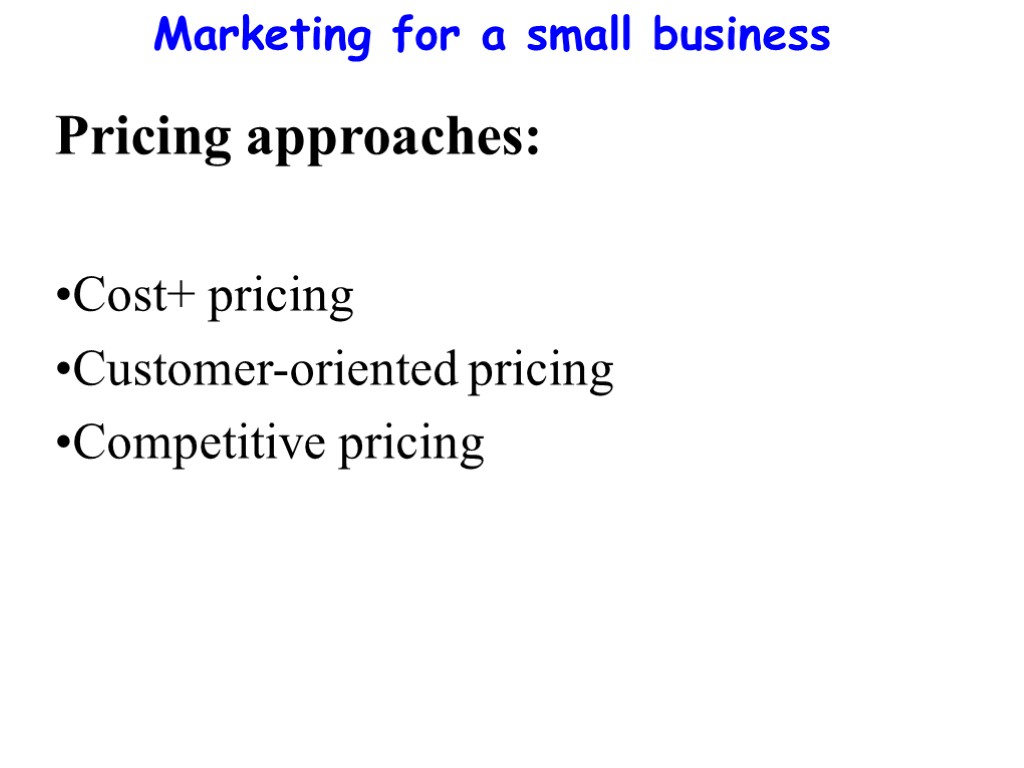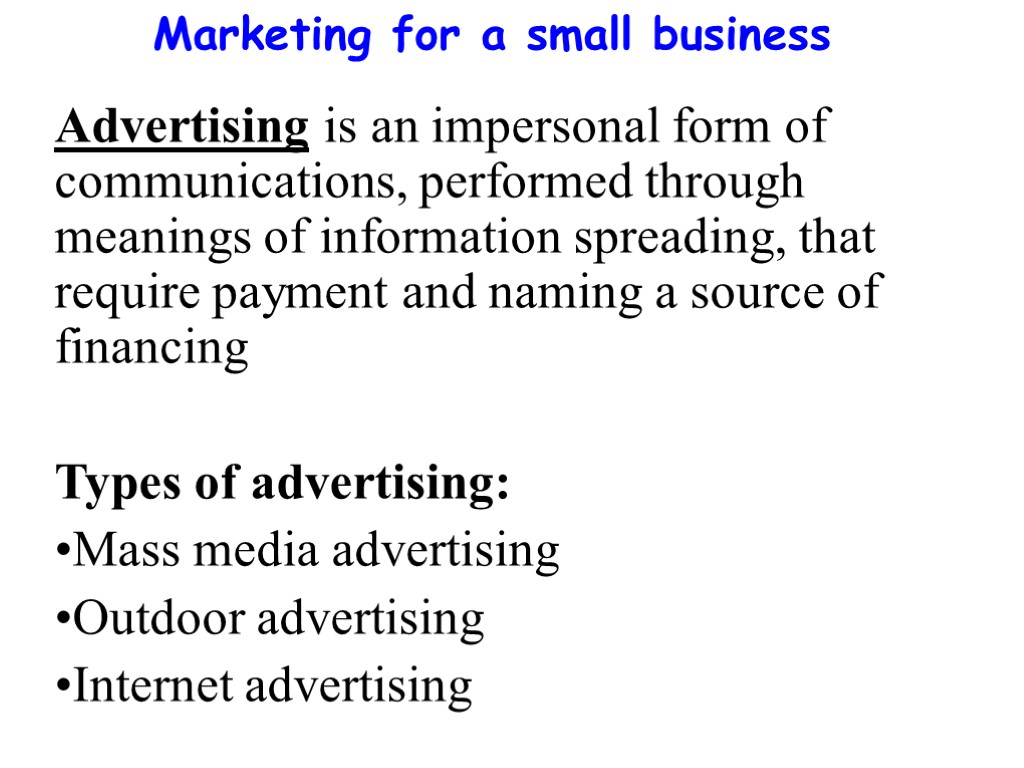Entrepreneurship and business-culture 6 Teacher Sorokina Anastasia Sergeevna


Entrepreneurship and business-culture 6 Teacher Sorokina Anastasia Sergeevna Management and business department KHNEU, 2011

Management and marketing for a small business 1. Managing a small business 2. Marketing for a small business

Managing a small business The main success factors for a small business: Business choice Place Marketing Staff Management

Managing a small business The main business partners (without consideration of customers and suppliers): Partners (co-founders) Lawyers Accountants Bankers Consultants Advertising agencies Shipping organizations

Managing a small business Team management: Recruiting Selecting, rotating Training Motivating Managing

Managing a small business Recruiting stages: Preparation Finding Qualified Applicants Interview Choosing Hiring

Managing a small business Survey form example: 1. Name: 2. Position: 3. Please describe your job: 4. What are the most important things you do in your job? 5. What is the best part of your job? 6. What is the worst part? 7. What would you change about your job? 8. Does the job reflect what you were told during the hiring process? 9. What improvements could be made to our hiring process?

Managing a small business Leadership and organization culture are crucial for team management, especially for a small business

Business growth Stages of Business growth : The early development Growth Maturity Decline

Business growth Expansion bases: Suppliers Related business Customers Non-related business

Business growth Related business expansion: New users for existing products New way of using for existing products More frequent usage among existing customers New products for existing users (product line broading)

Marketing for a small business Marketing is the philosophy and process of determining and satisfying customers’ needs Marketing is the process of planning and executing the conception, pricing, and distribution of ideas, goods, and services to create exchanges that satisfy individual and organizational objectives. Marketing is performed with Marketing research Set of marketing tools (marketing-mix or 4“P”)

Marketing for a small business 4 “P” fit 4 “C” and includes: Product – Consumer needs Price – Costs Promotion – Communications Place – Convenience

Marketing for a small business Product levels Product idea Real product: Quality Functions Outlook Brand Packaging Product with support: Delivery Cutting Assembling Other servises Sale conditions Credit Guarantees

Marketing for a small business Pricing approaches: Cost+ pricing Customer-oriented pricing Competitive pricing

Marketing for a small business Promotion includes: Advertising Sales stimulation Direct marketing Public relations

Marketing for a small business Advertising is an impersonal form of communications, performed through meanings of information spreading, that require payment and naming a source of financing Types of advertising: Mass media advertising Outdoor advertising Internet advertising

Marketing for a small business Sales stimulation is a complex of short-term measures of sales increasing Objects of Sales stimulation : Customers Middlemen (retailers) Sales staff

Marketing for a small business Customers sales stimulation includes: Free samples Coupons Money payback Packaging with discount Promo actions Sales Presentations Exhibitions Product placement

Marketing for a small business Middlemen sales stimulation includes: Free goods Cooperative advertising Trade competitions Placement fee

Marketing for a small business Types of distribution channels: Direct (producer – customer) Indirect (producer – [wholesaler] – retailer – customer)

Marketing for a small business Name Money Own Producer’s Own Producer’s Middlemen types

Marketing for a small business
entrepreneurship_and_business-culture_6.ppt
- Количество слайдов: 23

